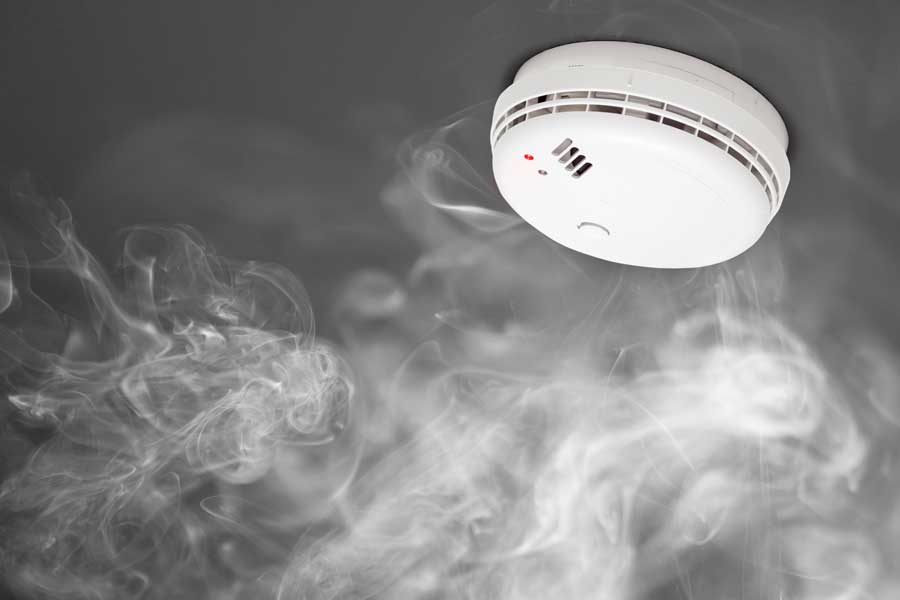
On average, 2,600 deaths and around 11,000 injuries occur annually due to residential fires. Out of the 350,000 or so fires that occur yearly, most of them happen at night while people are sleeping. Shockingly, these statistics take place even in homes where there are working fire alarms. Why does this happen? Are there different kinds of fire alarms and if so, is one safer than another? That is what we are going to discuss here today.
Types of Fire Alarms
Did you know that there are two main types of fire alarms in homes and businesses today? They are ionization and photoelectric alarms and they both detect fires very differently.
Photoelectric
Photoelectric smoke alarms work to detect fires by observing light that passes through the air. A combination of a photosensitive element and an LED light beam allows the detector to become triggered when smoke particles obscure the light beam. The reduction of light is what triggers the alarm.
Ionization
Ionization smoke alarms rely on an entirely different detection method. These fire alarms are built with two electrically charged plates in conjunction with a bit of radioactive material. These elements allow the detector to measure the ionization in the air of a building. The plates are able to detect combustible materials in the air and will be triggered when a large amount of combustible particles are present.
Which Alarm is the Safest?
Both alarms outperform the other when presented with different types of smoke. For example, ionization alarms trigger faster when a fast flame fire is present. On the other hand, photoelectric alarms responded faster when smoldering fires were present. It is important to note that smoldering fires are responsible for the most residential fire fatalities as they produce the most amount of smoke. At the end of the day, most fire fatalities occur due to smoke inhalation and not flames. Which is why most fire fatalities occur when people are sleeping and unknowingly inhaling large amounts of smoke.
It is also important to note that ionization alarms were only slightly quicker to be triggered during fast fire flames, while photoelectric alarms were triggered much faster than ionization ones during smoldering fires. Ionization alarms regularly fail to give people enough time. Ionization alarms are also responsible for many false alarms. Such as when the alarm is triggered while you are cooking. This leads many to disable the alarm because it is a nuisance, and they may forget to reset it. This leaves households in a very vulnerable position.
Clearly, photoelectric alarms are more reliable, accurate, and safe.
You want to feel safe in your home and having the best fire alarms can help you sleep soundly. That is why at Strouse Home Inspections, we always make sure to identify which type of alarm a home has and test that they are working properly. Let us help you feel safe.
By Strouse Home Inspections 12-10-2021